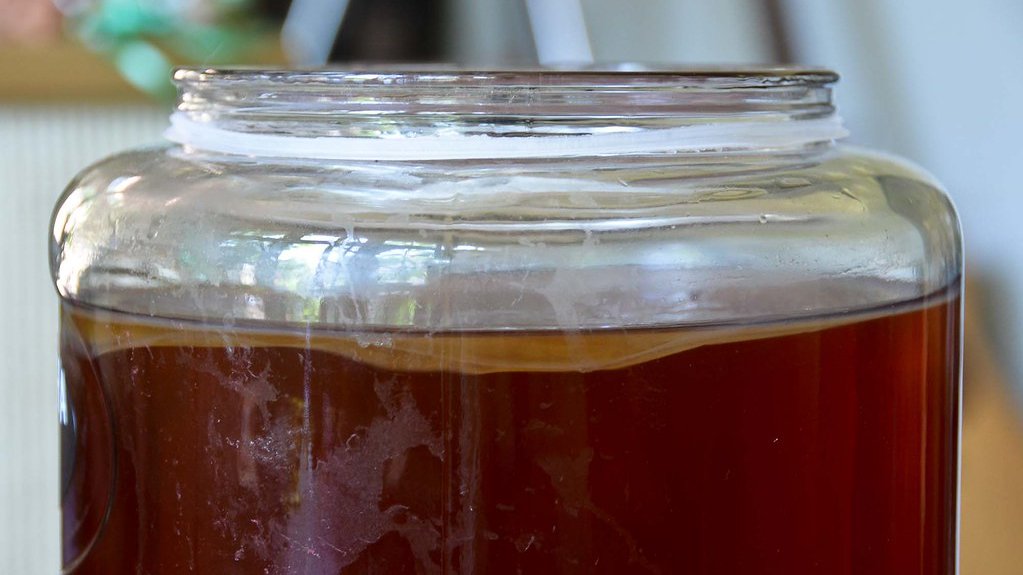A SCOBY culture consists of several species of bacteria and yeasts. No culture is exactly the same. These microbial species work together to transform sweetened tea into fresh, carbonated kombucha.
A SCOBY culture consists of several species of bacteria and yeasts. No culture is exactly the same. These microbial species work together to transform sweetened tea into fresh, carbonated kombucha.
From tea to kombucha
From sweet tea to a sour, carbonated kombucha. How does the SCOBY culture do this? The yeasts convert the sugars from the tea into carbonic acid and alcohol. The bacteria, in turn, convert this alcohol into acetic acid. This makes the drink more sour, and less sweet. The tea also gets loaded with probiotics, enzymes and antioxidants. The result? A delicious kombucha, which is also believed to be good for our health.

SCOBY fashion
SCOBY is proving useful not only for fermenting tea. More and more research is being done on SCOBY as a vegan alternative to leather. You may have heard of mycelium leather, made from fungal hyphae. SCOBY can be dried and shaped in such a way that it takes on a leather-like structure. Growing this microbial leather is a lot less damaging to the climate: less water is needed and less CO2 is produced.
Probiotics
Our gut is full of both harmful and healthy microbes that are constantly competing with each other. In a healthy gut, these populations keep each other in balance. However, if your gut flora is disrupted by illness or antibiotics, for example, the harmful gut bacteria can gain the upper hand.
At that point, probiotics can be helpful. Probiotics contain a large amount of living lactic acid bacteria that enter your gut through your digestive system. Although the health effects of probiotics have not yet been scientifically proven, many people swear by them.

